Rainwear Maintenance
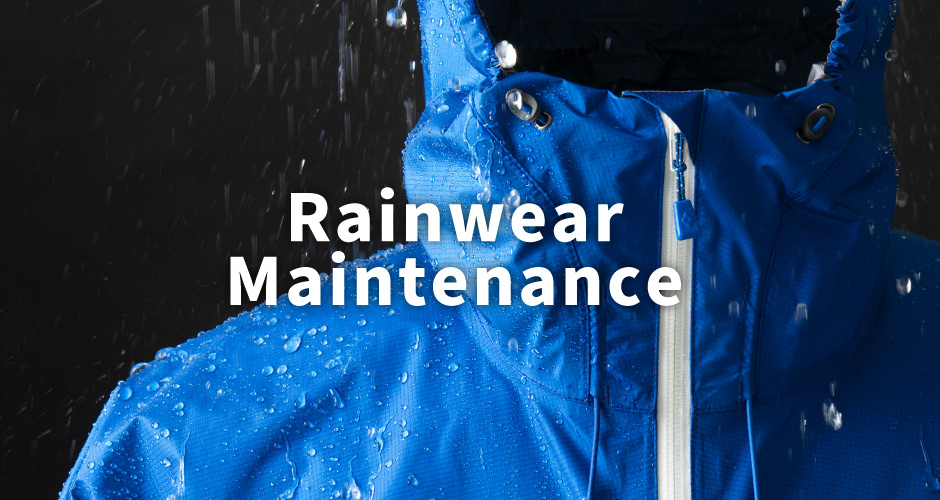
Your rain jacket and pants are your defense against moisture in the outdoors, making them one of the most important investments that you'll make. Despite serving such an important role, people often misunderstand how to maintain their rain gear. We receive many questions and inquiries about washing, cleaning and “Why is my rain jacket no longer waterproof?” More often than not, these inquiries are related. Read on for the answers to your own rainwear maintenance questions and get the know-how needed to help you get longer lasting use from your rain jacket and pants.

Things you’ll need:
●Washing machine
A front loading machine is fine, and a top loading washing machine may be used as long as it doesn’t have a center agitator, which could potentially damage your gear.
●Dryer
Heat is essential for reactivating the water repellent finish. Be sure to check the care label to see if your garment can be dried in a dryer.
●Specialty detergent designed to wash shells
Check your local specialty retailer for detergent that is designed to safely and effectively clean waterproof breathable materials such as DRY-TEC and GORE-TEX. Montbell recommends cleaning products made by Gear Aid, Nikwax and Grangers. Standard household detergent is not recommended as it may leave behind hydrophilic (water attracting) residues and contaminants that will only pull water into the face fabric again after you’re done washing it.
●Water Repellent Finish
You'll need a water repellent finish if you are going to reapply after washing. Spray-on and wash-in types made by brands such as Gear Aid, Nikwax and Grangers will restore the DWR finish on your rainwear and other outdoor gear as well.
Directions:
1.
First, review the care label on your rainwear. Although most rain gear can be washed using the instructions below, you’ll want to double check for the rare cases where special washing instructions are required (hand washing, turning inside out, etc.) Also, check the instructions on your detergent for the exact amount of cleaner to use.2.
Remove any excess dirt and spot clean any stains with dabs of cleaner.3.
Close all zippers and hook-and-loop straps, loosen all drawstring cords, then place in a laundry bag.4.
Wash using warm water and be sure to run the rinse cycle about twice as long as normal to ensure all detergent residue is washed away. Do not use a spin cycle as it could damage your washing machine.5.
Next, place in the dryer on low to medium heat. As a guideline, the temperature should be at or below 60°C/140°F.6.
Once dry, you will actually need to apply heat by running it through the dryer for additional time. Why? This will reactivate the water repellent finish. During this process, periodically check to make sure that your rainwear is not being excessively exposed to heat.*When drying and heat application are finished, do NOT allow you gear to sit in the dryer. Resting on the hot metal drum in the dryer could potentially damage your gear.
If you don’t have a dryer or the care label doesn’t allow for machine drying, you may be able to use a clothing iron to reactivate the water repellent finish.
1.
After washing, gently press water out of the shell. Do NOT wring out your rain gear. Doing so could could result in damage.2.
Next, line dry your shell in the shade away from direct sunlight.3.
While using a clean, white ironing cloth as a barrier, apply heat with a clothing iron set to a low temperature. This will reactivate the water repellent finish. Be sure to follow the temperature setting written on the care label and make sure the iron is NOT too hot.
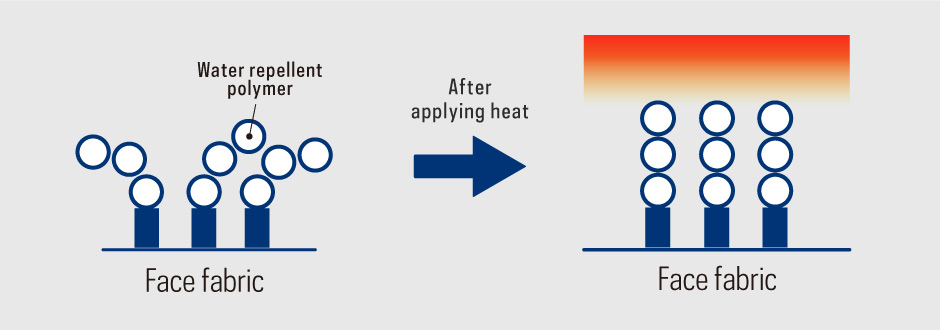

You can extend the lifetime of your rainwear by washing it frequently. We understand that some people are concerned that they could damage their rain shells when washing. However, regular washing is far better than storing items with sweat, sunscreen and other contaminants left on the fabric. Regular care and maintenance will help extend the life and performance of the shells that you made such an important investment in.

Even with regular maintenance, eventually the factory water repellent finish will wear out. When this will happen is hard to say, but if water is still saturating the face fabric even after washing and heat treatment, then it's time to reapply a water repellent finish. As mentioned earlier, spray-on and wash-in water repellents made by Gear Aid, Nikwax and Granger are recommended. If your shell has a micro-fleece liner or some kind of insulation, make sure to use the spray-on type, not the wash-in. Be sure to wash your rainwear before applying the treatment and follow all instructions on the treatment’s packaging to get optimal performance.

Things happen and sometimes we snag our jacket on a branch or brush up against a rock wall. Whatever the cause is, rips and tears will happen. Depending on the location and the degree of damage, you may be able to patch up small tears and abrasions. Although the below patches and repair methods are not permanent and will come undone due to time and circumstances, follow the directions below to make it as effective as possible.
Applying a Repair Sheet or Repair Patch
Our Repair Sheet allows you to cut the patch to your desired size. The Repair Patch is a pack of precut patches with a case to slot into your wallet. Both are applied on the outer face of the garment and are best used when you’re “in a pinch” out on the trail. For a longer lasting patch, use the GORE-TEX Patch Sheet.
1.
Make sure the surface you are going to apply it to is clean and dry.2.
For the Repair Sheet, cut it to size with scissors, allowing for the patch size to extend beyond all edges of the damaged area. Rounding off the corners will create a more secure bond.3.
Attach the patch to the face fabric over the damaged section while being careful not to create any wrinkles or air bubbles.4.
Press firmly on all edges to make a more secure patch.
-
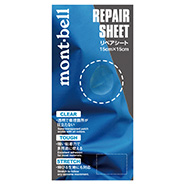
Repair Sheet
Price: CHF13.00 -
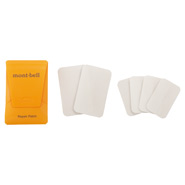
Repair Patch
Price: CHF17.00
Applying a GORE-TEX Patch Sheet
When you’re back home, use a GORE-TEX Patch Sheet, a sewing needle and an iron to apply a comparatively more long-lasting patch.
1.
Make sure the surface you are going to apply it to is clean and dry.2.
Sew together the damaged area.3.
Cut the patch to size with scissors, allowing for it to extend beyond all edges of the damaged area. Rounding off the corners will create a more secure bond. Place the patch on the inner side of the garment.4.
Place a clean, white ironing cloth over the patch and press down firmly with a clothing iron set to medium heat (about 160°C/320°F) for 20 seconds to set the adhesive bond between the fabric and the patch. This temperature is technically higher than the clothing iron heat settings written on most rain gear care labels. Therefore, an ironing cloth and extra caution must be used when applying this patch.5.
Remove the ironing cloth and allow to cool completely. Reapply the iron and iron clothing as necessary to improve the bond.
-
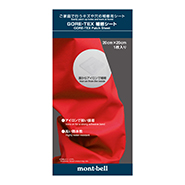
GORE-TEX Patch Sheet
Price: CHF7.50


Same as maintenance, storage is an important factor in keeping your rain gear fully-functional for longer. Here are some tips!
1.
Store your shells on hangers. Any residual moisture could damage the fabric if your jacket or pants are left in the stuff bag.2.
Store away from direct sunlight in a cool, dry, well-ventilated place. Ultraviolet rays will damage the fabric, as will extreme heat and high humidity. While it’s necessary to put your jacket in the dryer to reactivate the water repellent finish, it’s not recommended to leave it in the car on scorching summer day.3.
Do not store or allow your rain gear to come into direct contact with chemicals such as desiccants, insect repellents or deodorants.4.
Lastly, keep your rain gear as clean as possible, especially when storing it. Storing it dirty will result in fabric deterioration.

Even with regular maintenance, attentive care and proper storage, all products ultimately reach a point where repairs are no longer possible and it’s time to invest in new gear. Eventually, the bond between the membrane and the face fabric/lining fabric/protective coating will break down. Once your shell reaches this point, it’s time to retire it and search for a new one. Although this is not something that can be prevented, it is something that can be delayed with proper cleaning and storage! We also recommend patching up small rips and tears as we covered above. Although temporary, patching allows you to extend the life of your garment. However, depending on the severity of the damage, it may be time to retire your trusty shell.


To understand why your rain shells need to be washed, it’s important to understand their construction and how they work. Most Montbell shells have a face fabric on the outside bonded to a waterproof breathable membrane with adhesive. On the interior, there could be a liner fabric bonded to the membrane or a protective coating applied directly.

The membrane is what is responsible for keeping you dry. It is able to do this because it has microscopic pores which keep water droplets (rain) from passing through from the outside to the inside of the jacket. At the same time, these pores allow much smaller water vapor molecules (evaporated sweat) to pass through from the inside to the outside. These pores are what enable the membrane to have both waterproof and breathable qualities, helping you to stay dry in the rain without overheating on the inside.
In order to make water bead up and roll off of your rain jacket and pants, the face fabric receives a water repellent finish. As shown below, water repellent polymers are evenly spread out over the face fabric. This helps break up surface tension, which makes water bead up and roll off of your garment. However, water repellent finishes are not invincible and won’t last forever. Over time and without washing, things such as oil from the skin, sunscreen, dirt and any other remnants from past adventures will build up and interfere with the water repellent polymers. Friction along high abrasion areas, such as on the shoulders where pack straps rest, can also result in quicker breakdown of the water repellent finish. When these water repellent polymers collapse, they no longer provide surface tension and rain is able to saturate the face fabric. Although this water isn’t able to penetrate through the membrane, it will block the membrane’s pores, which will prevent water vapor (evaporated sweat) from moving from the interior to the exterior. This drastically reduces breathability and results in a situation where your sweat will start to build up and soak the inside of the shell. This phenomenon is commonly referred to as “wetting out” and can easily be mistaken for leaking. This leads to questions such as, “Why is my rain jacket no longer waterproof?” When the face fabric starts becoming saturated like this, it's a sign that the garment needs to be washed and a water repellent finish may need to be reapplied.

Although rainwear maintenance may seem a bit intimidating, it's actually quite easy! Proper washing, maintenance and storage will help maintain the performance of your Montbell rain shells, allowing you to get longer lasting use from the important investment that you made!
